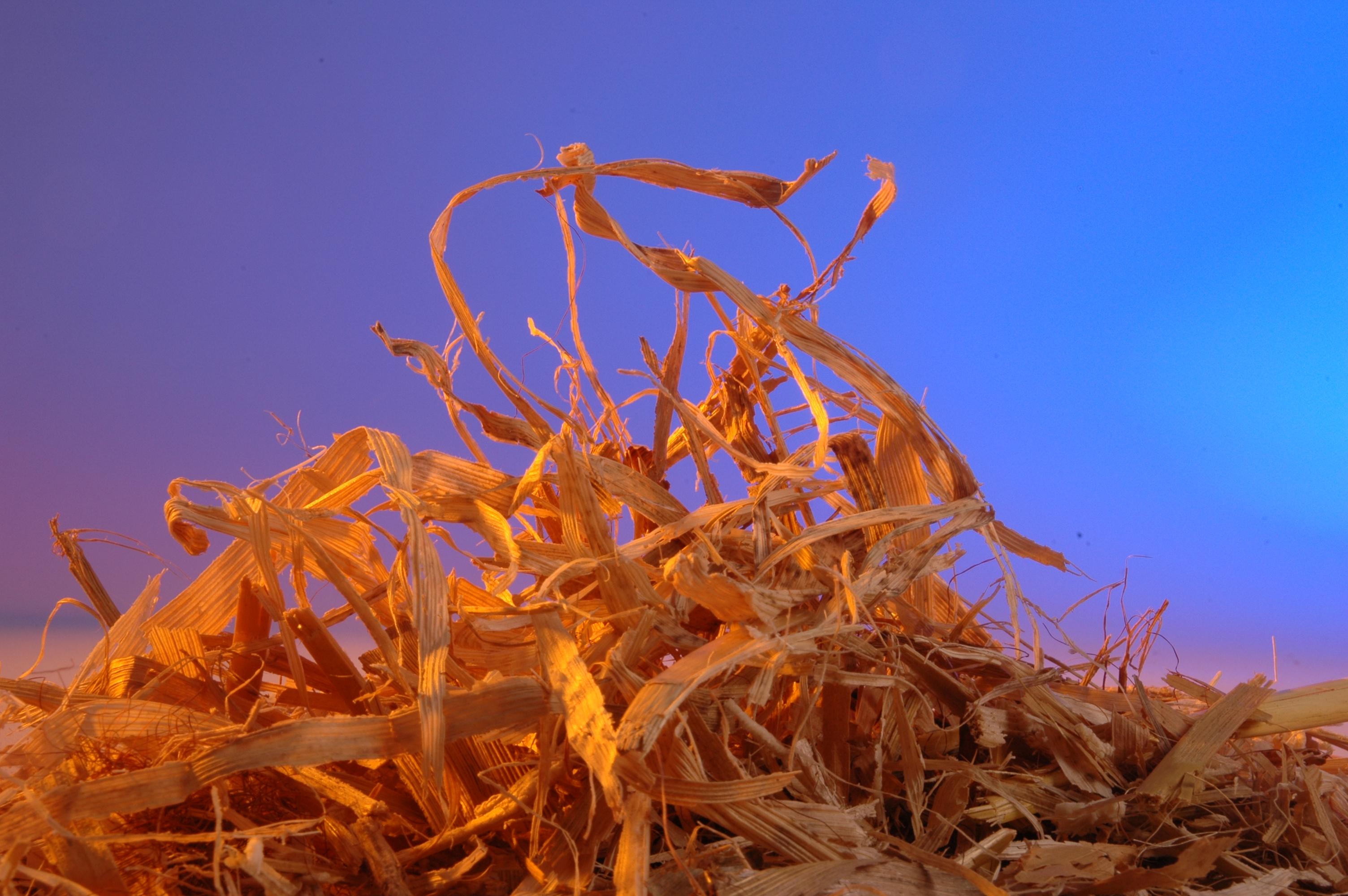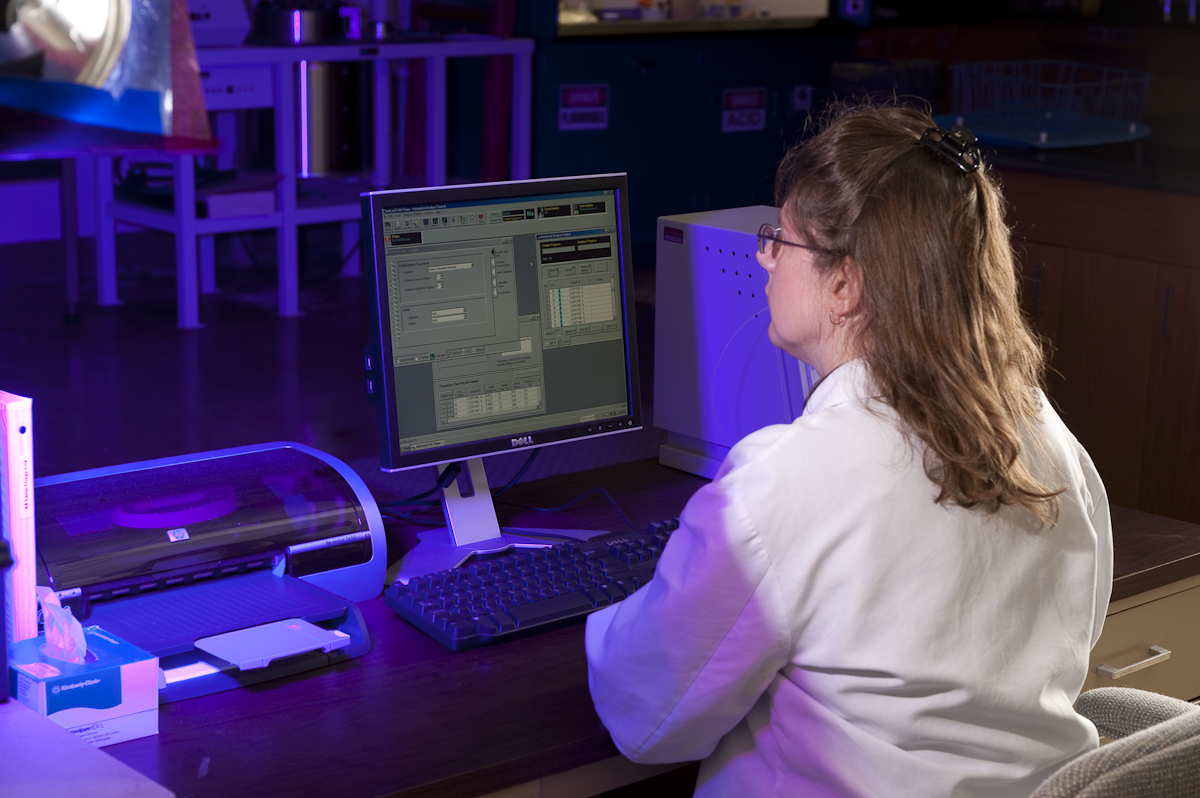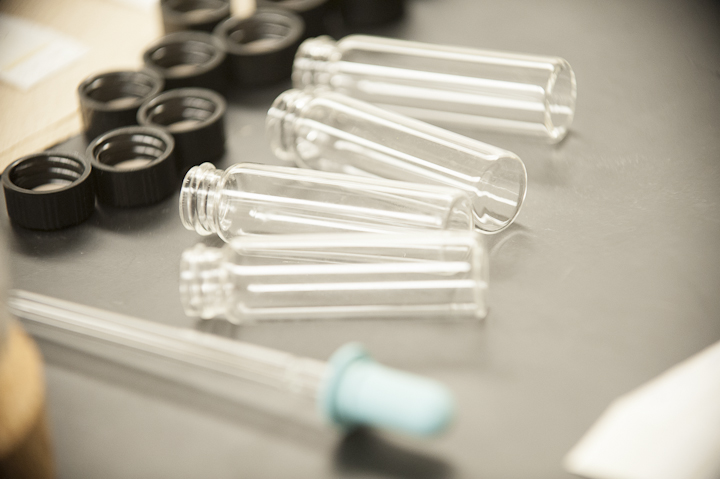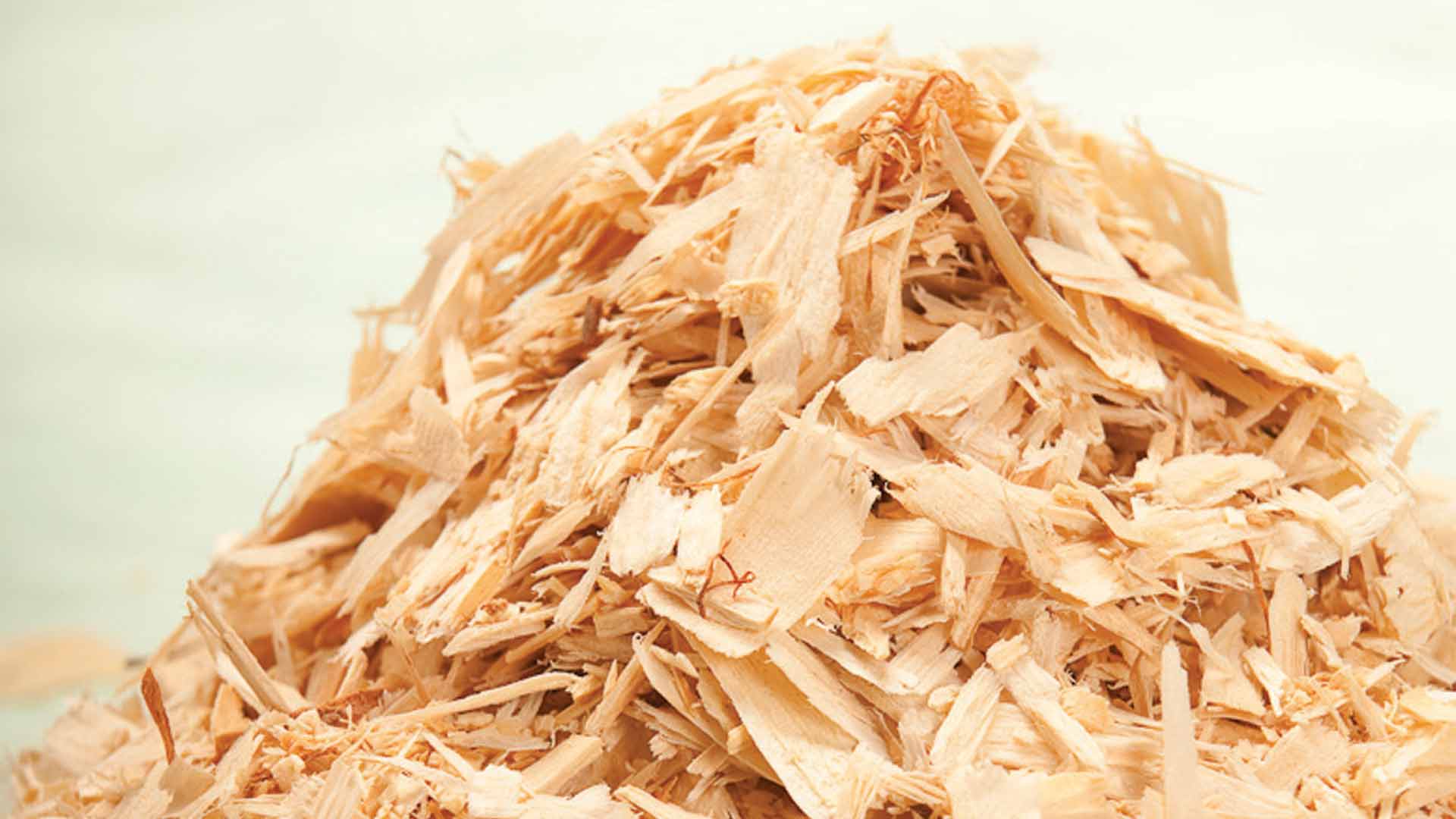>Listen to a radio segment on biomass
–by Liz Morrison
AURI is testing a way to make corn stover and other biomass more nutritious for livestock.
Lignocellulosic biomass contains plenty of nourishing carbohydrates, but they are locked up in complex chains of molecules, making them hard to get at. Although the technology isn’t new, researchers at AURI’s coproducts lab in Waseca are using an alkaline solution to break down the bonds and release the nutrients so they are easier to digest.
The process “takes low-quality roughages and improves the available energy for dairy cows, beef cattle, and sheep,” says Al Doering, AURI coproducts scientist, who is leading the trials. The research could add value to crop residues and perennial grasses, while cutting livestock feed costs and expanding biomass uses.
Calcium hydroxide, or slaked lime, is mixed with water and applied to chopped biomass. The treated material, which is about 50 percent moisture, is then packed into a bunker or bag and ensiled for 30 days. The cured feedstuff can be substituted for a portion of corn and hay in ruminant livestock rations.
 “This technology has excellent potential to create new sources of high quality animal feed from underused resources,” Doering says.
“This technology has excellent potential to create new sources of high quality animal feed from underused resources,” Doering says.
AURI will test the calcium hydroxide process on a wide range of Minnesota-grown biomass to identify which plant fibers produce the greatest nutritional returns. Trials will include cash crop residues, such as corn stover and cereal grain straws, as well as perennial grasses, such as switchgrass, brome grass and fescues, which are often grown on erodible or marginal land.
AURI’s preliminary lab trials suggest that calcium hydroxide treatment boosts the energy content of some crop residues — including corn stover and barley straw — by more than half, Doering says. That would make them nutritionally comparable to medium/low-quality alfalfa hay. “We’ll need to see a big jump in nutritional energy availability to offset the processing costs. Secondly, lower corn prices may have an effect on economics.”
AURI will also test the feasibility of pelleting treated biomass to make it easier to ship — but that’s a long shot, Doering says. “I see this primarily as an on-farm application — treating forages like silage.”
AURI to demonstrate technology
This technology has several advantages for dairy and cattle producers, Doering says. Many livestock operations already own baling equipment. Calcium hydroxide is inexpensive, grinding and ensiling equipment is readily available, “and producers could do this themselves on their farms.”
Cattle feeding trials have already been done on alkaline-treated corn stover, Doering says, and more trials may follow for other treated fibers that show promise. Beef and Dairy Cattle producers may be interested in this technology, says Mitch Coulter, research manager for the Minnesota Corn Growers, but growers will need to see feeding trial results.
As part of AURI’s Innovation Networking program, AURI will collaborate with a maker of industrial grinding equipment, to demonstrate the processing technique, Doering says. “It’s our goal to make producers aware of this value-added opportunity for a variety of fibrous feedstocks.”
Building a bio-economy, step by step
AURI’s research on processing biomass for livestock feed is part of a larger effort to expand biomass production and use in Minnesota.
Biomass sources such as cover crops, perennial grasses and forages offer significant soil and water conservation benefits, says Nick Jordan, a University of Minnesota professor of agronomy and plant genetics. He is leading a trans-disciplinary research program that aims to increase biomass crop production in Minnesota. The goals are to foster soil and water conservation and boost rural economic vitality.
“Building Community-based Bioeconomies” — funded by $1.3 million in federal and state grants from the U’s MnDRIVE program — brings together scientists and engineers in the fields of agriculture and biosystems, computing, robotics, landscape architecture, and regional planning. “We’re taking a comprehensive, system approach,” Jordan says.
His diverse team is working with residents of the Seven Mile Creek Watershed south of St. Peter, Minnesota, on ways to incorporate more biomass crops on the landscape. In workshops last year, participants used interactive computer models to explore the economic and environmental costs and benefits of alternative cropping systems in their watershed.
“Perennial crops could be an option for farmers on marginal lands,” says Mitch Coulter, research director for the Minnesota Corn Growers. But increasing the number of biomass acres in corn and soybean country will first require profitable biomass markets, says AURI coproducts scientist Al Doering.
To that end, Jordan’s group is also examining new technologies for refining biomass — either for livestock feed or for conversion to biofuels and biochemicals.
One such technology is the calcium hydroxide and ensiling treatment that AURI is testing for on-farm use. “This is one of the cheapest and easiest processes now available” for breaking down cellulose, Doering says, and “the one that probably makes the most economic sense now.”
Another technology, developed at Michigan State University, uses ammonia to unlock the sugars in corn, wheat and rice residue, and perennial grasses. The process, known as AFEX, is more expensive, Doering says, but costs could come down as the technology advances.
Other biomass refining technologies are also nearing commercialization, Jordan adds. These innovations could spark new rural enterprises, such as feed processing plants, he says. “There’s a wide range of products that can be made from biomass.”
AURI and Biomass Refining

Idea to reality: Increased biomass crop production would benefit Minnesota’s soil and water quality, but farmers need profitable markets for biomass.
AURI’s role: AURI is testing a refining process that increases the digestibility and nutritional value of biomass for livestock feed. The technology uses a calcium hydroxide solution and ensiling to unlock the nutritious carbohydrates in cellulose.
Outcome: AURI will demonstrate the technology for cattle and sheep producers in 2015 as a component of its Innovation Networking Program.
Partners: University of Minnesota
Podcast: Play in new window | Download (1.0MB) | Embed
